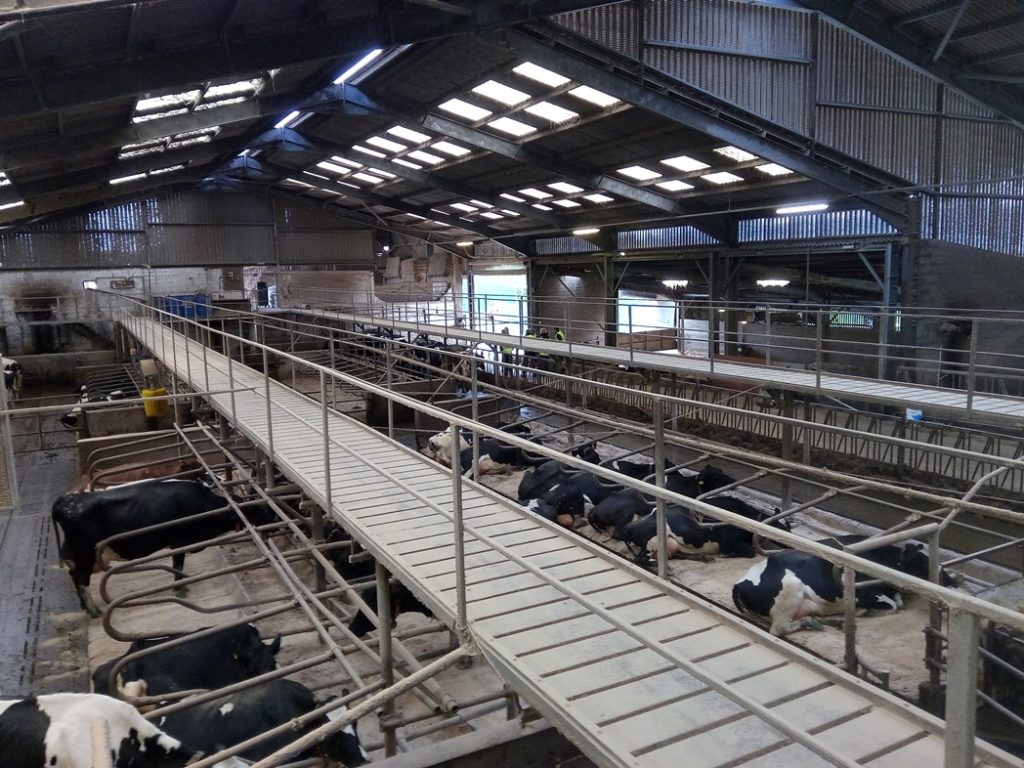Lighting for Cows
7 December 2018As the shortest day approaches it seems appropriate to think about the day length that your cows are experiencing. Research has shown that both quantity and quality of light in the cow shed can affect milk yield and fertility.
Light has an inhibitory effect on the enzyme involved with melatonin production. The concentration of melatonin in the blood has an influence on the concentration of other hormones, such as insulin-like growth factor-1 (IGF-1). It is an increase in IGF-1 associated with longer day length that is thought to lead to an increase in milk production. This increase can be between 6% and 10%.
However, as with many other species, melatonin has an influence on fertility. It is therefore important that lactating cows have a daily period of darkness. It has been shown that the optimum day length is 16 hours at a light intensity of between 160 and 200 lux. The “dark“ period should be 8 hours at below 50 lux but greater than 30 lux. This level still allows cows to exhibit normal behaviour with confidence.
Red light can also be used to simulate darkness. This does not alter the cow’s perception of darkness but does make it easier for those working with the cows to carry out night-time checks.
There are many factors that should be taken into account when formulating a lighting design to achieve the appropriate photoperiod and light intensity. Simply replacing existing bulbs with brighter ones will bring a cost but may not give the desired benefit.
Ideally, light intensity should be uniform throughout the shed without any dark corners. As light is sensed by the retina in the eye, it is best to take measurements where the cow’s eye will be. This is especially relevant if using troughs rather than a feed barrier. Cows are known to prefer to eat from a clean, light coloured surface. Such a coating in the trough will encourage intake and provide reflected light.
Modern Lighting Options
Although many modern lighting options are very energy efficient, the use of fixed light sensors or timers can further reduce electricity use by only having the lights on when necessary. Making best use of natural light can also help. Increasing the number of roof lights, or cleaning existing ones, will increase the light in the shed during the day. A ventilated light ridge will give more even light through out the shed, as well as the obvious improvements to ventilation. Any work done on roofs should be carried out with appropriate safety precautions in place.
Other things to consider when planning a lighting design should include positioning the lighting units where they can be maintained and cleaned easily. Placing lighting units where they can only be safely accessed with specialist equipment may delay their repair, so reducing the effectiveness of the whole design. Dust can build up on lighting units over time, which can reduce the light intensity available. Regular lux measurements should be taken throughout the lifetime of a system to be sure that it is giving the same light intensity as it was at installation.
Youngstock
Manipulation of day length can also have an effect on youngstock. Heifers given the same lighting regime as previously described for lactating cows have been shown to have increased skeletal growth, better mammary development and reach puberty a month earlier than heifers with a shorter day. Dry cows that were exposed to an 8 hour “day” and 16 hour “night” (the opposite of the lactating cow timing) gave more milk in the following lactation.
Milking Parlour
Lighting in the milking parlour should not be ignored. Light intensity should be around 500 lux in the pit. The collecting area should be significantly lower than this. This will give enough light for the milker to do their job and will help cow flow by exploiting the cow’s tendency to want to move from poorly lit to well lit areas.
Alasdair Scott, alasdair.scott@sac.co.uk
Sign up to the FAS newsletter
Receive updates on news, events and publications from Scotland’s Farm Advisory Service

